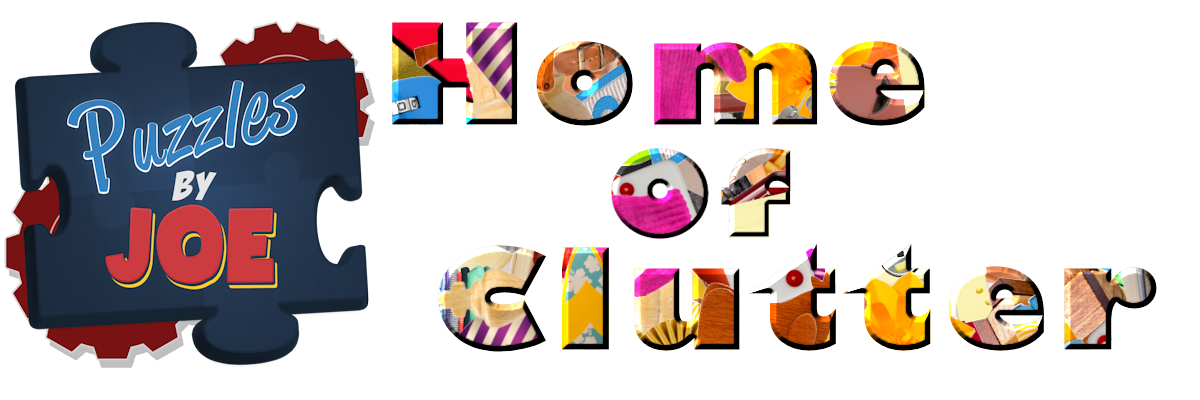The Bandage Cube
Here is a detailed analysis, proposed conventions and solution of the Bandaged Cube.
If you’re messing with the Bandaged Cube, then I assume you’re fairly competent with the basic Rubik’s Cube. So, I’m going to assume that, and people can just ask questions in a comment, if my analysis and solution isn’t crystal clear.
Colors = Y, G, R opposite O, B, W respectively.
Analysis and conventions:
There is only one single cublet; YGB. Looking at the cube with this cubelet in the upper right front corner…gives you Yellow on Top, Green on Right, Red in Front, Blue on Left, etc…This is what I will call the Home position.
There are seven other movable couplets and these will be denoted by their two long edges. GY, YR, RG (group-1), GO, RB, YW (group-2) and finally the BW piece.
The WO centers are connected – leaving just the other 4 centers to turn (YRG and B). The YRG sides are rotationally symmetric. I looked for an operator that would leave the BW piece untouched. I found the following, really nice one:
F R U F R- F2 U-
Let’s call that the Move and label it M.
Perform M in home position and you’ll notice that RG piece stays in place.
I numbered the remaining 5 edges as follows (6 and 7 being the other two)
- RB
- YR
- YW
- YG
- GO
- RG
- BW
I think of it as just a clock-wise numbering by looking at the single-cubelet (with Yellow on top of course).
This is a nice 5-cycle 1->2->5->4->3
Doing this 5 times, of course restores the Cube.
The Move (M) can be done with Yellow, Green or Red on top (keeping the single cubelet (YGR) in the upper-front-right spot).
I knew that the 5 cycle wasn’t going to be enough. At this point, I reasoned as follows. It’s easy to get the centers aligned. It’s easy to pop in BW (piece-7). It’s easy to get one of the (Group-1) pieces in which is then invariant under M from the right orientation (RG) (piece-6).
Using the 5-cycle, I can get one more in but that still left me with 11 unique positions to get to. There are 3 2-swaps and 4 3-cycles (2*4 + 3 = 11). Doing the 5-cycle from different directions only let me find one of the 11 (what I call the 23 (which swaps 2-3 and 4-5 (the 1 cube is now invariant by using M repeatedly until it’s in place). I needed one more interesting move and I found one. I call it The Big Move and I use B to note it (because it has to do with popping a piece in and out of the BW spot).
Here it is…The Big Move:
(U2 L U- F- L- U- F)(R U)(U2 L U- F- L- U- F)(U-R-)
1->2->5->3 and 4->6 A 4-cycle and a 2-cycle.
U2 L Ui Fi Li Ui F (accomplishes a lot but I think of it as getting the Yellow Red to go to the White-Blue spot (or 2->7). The (RU) then let’s you do the move again to put 7->2…and the final (U-R-) gets the cube back in it’s symmetrical form so the M operator can work.
With this operator (we’ll call it B) and Y, G, R for the M operator with that color on top). (Y on top is still the home orientation and the numbering). We have all we need to solve the cube from any position.
23 G2R-
24 RGB
25 YBG2Y2
2 GYBY2 – 3-5-4
3 GBR-Y2 – 2-5-4
4 BG2Y- – 2-5-3
5 Y2BG2 + 2-3-4
So, that’s it.
Get the Centers in place. Get the BW (7) in place.
Get RG (6) in place by using M from either R and G on top.
Get RB (1) by doing M with Y on top (or just Y).
Then look at 2, 3, 4, 5.
If one of them is in place use the corresponding formula (2, 3, 4, or 5) above.
If none of them is in place…look at where the YR (2) exchanged with – either 3, 4, 5 and use that formula (23, 24, 25) from above.
